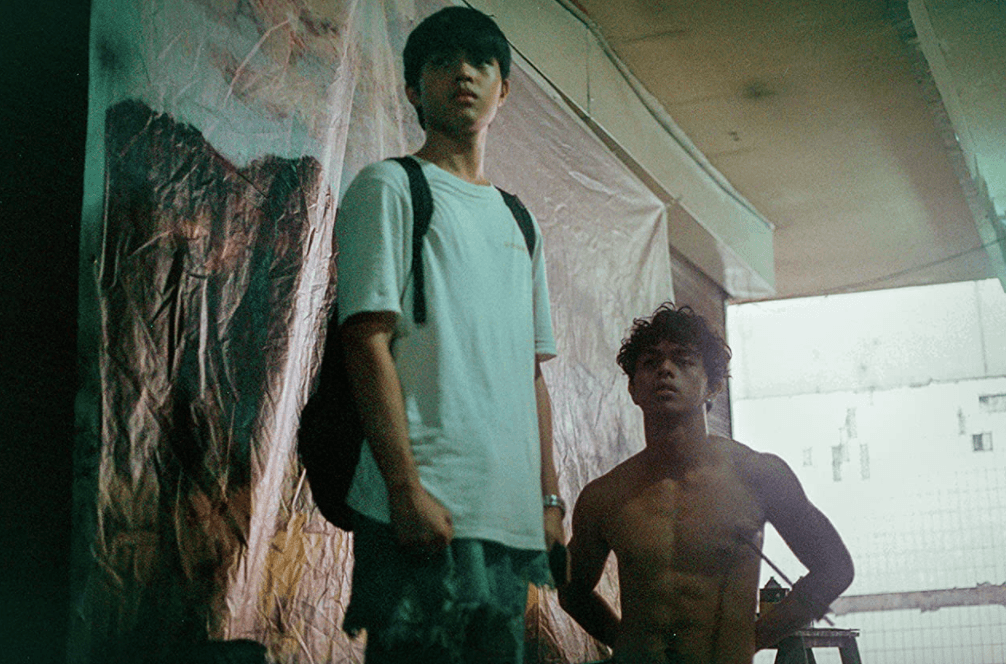SUMMARY
This is AI generated summarization, which may have errors. For context, always refer to the full article.

It was a great relief when QCinema announced that, for the second year in a row, it would be holding a hybrid film festival. This meant that Filipinos had an opportunity to access a slate of local and international arthouse films that they wouldn’t be able to otherwise.
From the two Hamaguchi films to Apichatpong Weerasethakul’s cinema-only Memoria to Lav Diaz’s Historya ni Ha, the in-person screenings are a cinephile’s wet dream — loaded with award-winning films from multiple international film festivals. But cinemas, like other enclosed spaces, still pose real risks that many of us (myself included) cannot afford to take and people based in the provinces (myself included, again) have found themselves unable (or even unwilling) to participate in the celebration.
The QCinema lineup on KTX has swooped in to assuage the fear of missing out. Though many of the titles are more obscure to the majority of viewers, there are many unexpected gems. Christos Nikou’s Apples and Philippe Falardeau’s My Salinger Year make their Philippine debut after their release to acclaim last year, while the return of two NETPAC winners — Bagane Fiola’s Baboy Halas and Sheng Qiu’s Suburban Birds — create proof that films can continue to be mesmerizing, even on the smaller screen.
In honoring the at-home movie viewing experience provided by QCinema, I’ve written about four 2021 releases that were personal highlights from the selection on KTX:
Yuni (2021; Kamila Andini)
There is a moment in Yuni that will stay with me forever. Faced with the choice between a marriage that will secure her future or her seemingly impossible dreams of higher education, the film’s titular character pleads with her mother, asking her for guidance and affirmation. As her mother assures her that whatever decision she makes is supported, there is a power outage. Submerged in darkness, the silence between the two, no matter how brief, speaks into existence an unnamable anxiety.
Throughout the film, Yuni is constantly reminded of how her fate is tied to her gendered circumstances: the mandatory virginity tests at their school, the ban on married girls in higher education systems, the lack of sex education, the pressures of arranged marriages, the gossip that forces people to enter into these marriages. These patriarchal pressures are so deeply woven into the fabric of society that they seem inseparable, even with how women interact with one another: where bathroom conversations become public shamings. Sixteen-year olds shouldn’t be making life-defining decisions this early on but in Yuni, and in many other Asian countries, they must.
Despite all of this, Yuni presents its titular character not as a bland representation of all Indonesian women, but as a whole person in herself: with an intelligence predicating her boundless curiosity, a possessiveness of the color purple being one of many manifestations of her unpredictable personality, and a rebelliousness often mistaken for bravery. And around her are a community of girls and women: colorful even in quietness, their conversations radiating openness and warmth. The presence of these friendships and relationships steer the focus away from the entrapment of patriarchy, though it is always there, but also towards female solidarity; one that comforts even at the most difficult times.
By tying personal freedoms with larger cultural practices and political paradigms, Kamila Andini paints the invisible forces that keep girls out of school and in loveless marriages; that destroy dreams and force them to live out bleak realities. At the center of this, Yuni finds herself dissatisfied with the circumstances that limit her choices and its final act, though radical and polarizing, tugs at a thread that shows us why everything must fall apart.
The Girl and the Spider (2021; Ramon Zürcher, Silvan Zürcher)
So many of the things that happen in The Girl and the Spider seem like things that should be happening in private — from discussions about herpes and stories of lonely old cat women to overt flirtation, nudity, and sex, to divulsions of secrets and intimate histories. Instead, they happen in public — at parties, hallways, rooms in the midst of a major move.
The lack of barriers between the characters (whose names most times escape me) is a given in this apartment complex and the space mediates these interactions between the characters trapped within the same space. Each odd observer becomes integrated into the fold, constantly moving in a web that is around Mara, who doesn’t seem to be involved in moving anything at all.
Directed by the eclectic Zürcher twins, The Girl and the Spider screams “arthouse” — with its vibrant colors, rich sound design, and impeccable (almost clinical) blocking, constantly shifting characters in and out of spaces, parking them at the most inopportune times. Others will surely find this off-putting. But there is something so magnetic and kinetic about the film; a formula in the control and the chaos that demands to be derived mathematically. Material possessions and relationships accumulate and, almost as rapidly, fragment within the same scene. With every confession of desire or inner life, it is unexpectedly entrancing though it sets you up to be snapped out of your reverie moments later.
There is so much mess in this film — the process of processing living; maybe the state of being queer and fuckable — and it reminds its audience that it is possible to enjoy a film without necessarily understanding everything, or anything really. It leaves you with a feeling. It leaves you gasping for more. And then, it leaves you.
Asian Shorts Program
Of this year’s online lineup, the sextet of Southeast Asian short films were the biggest and most wonderful surprise. A new category introduced by QCinema, the program is a collection of colorful introductions to young Southeast Asian filmmakers whose stories are bound together by regional geography but separated by context and perspective. What stands out in the program is how each filmmaker depicts how their spaces mediate the formation of relationships and identities — both personal and national.
Petersen Vargas’s How to Die Young In Manila presents the dimly-lit Escolta where death and desire are intertwined queer truths. Sorayos Prapapan’s New Abnormal depicts irreverent snippets of Thailand during the pandemic to provide a snapshot of how dissent and resistance takes different shapes and forms in the country. Monica Vanesa Tedja’s Dear to Me creates a pocket of space and time wherein the two queer lovers may meet again, separated from the opposition they would normally face from religious forces and familial expectations.
Danech San’s Sunrise in my Mind uses the workplace to allow two lovers — too shy or shamed into admitting their interest — to meet, later creating a fictional space wherein they are able to express their love through their bodies. Vu Minh Nghia and Pham Hoang Minh Thy’s Live in Cloud-Cuckoo Land introduces a fragmented Vietnam whose clashes between the rural and urban, the realistic and the mystic, create a room for the emergence of a Kafkaesque love story. Rafael Manuel’s Filipinana utilizes its expansive and suffocatingly utopic golf course to present how small its protagonist is in the face of corrupt and classist systems.
The combination of these short films create a vibrant picture of Southeast Asain filmmaking defined by seeing the absurdity in the mundane, the romantic in the banal, the hopeful in the hopelessness. The program has proven itself to not only be entertaining and formally enlightening but also challenging to how we perceive stories and lives from Southeast Asia. I only hope that QCinema keeps this section and continues to program spaces for these new voices in future years.
Islands (2021; Martin Edralin)
The deceptively simple logline of Islands may prevent many viewers from watching it, but the core of the film is a surprisingly emotionally effective and endearing story about coming-of-age later in life.
Joshua, a former Philippine dentist-turned-university janitor in Ontario, lives an increasingly lonely life under the roof of his parents’ household. The monotony is suddenly shattered by a string of losses: his mother dies after a laundry slip-up, forcing him to abandon his job to take care of his grief-stricken father. After help arrives inmundae the form of her cousin Marisol, Joshua slowly grows up at the tender age of 50, out of his shy and domestically incompetent self, into a more independent and capable man.
Even if the portrayal is at times stilted, Islands succeeds because it doesn’t fall into the trappings of arthouse expectations, opting instead to let the narrative unfold simply. At its best, it is charming, finding truthfulness and lightness in otherwise dark situations by sandwiching the existential crises between comedic moments. Though not everything ends up happily, Joshua opens himself up and as he begins to reckon uncomfortably with his own identity, personality, and desires, we find ourselves rooting for him. – Rappler.com
Add a comment
How does this make you feel?

There are no comments yet. Add your comment to start the conversation.